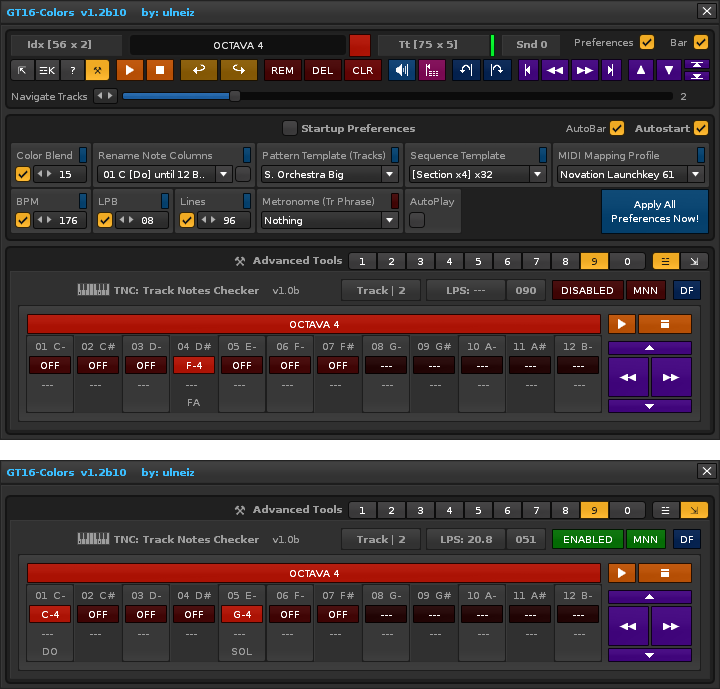GT16-Colors v1.2b10 released! Download here:Comment #14
Interesting news! Now, GT16-Colors welcomes a new Tool Module: TNC: Track Notes Checker.
TNC serves to correct or modify complex melodies when you have used 12 note columns within a single track.Compose your melodies respecting the order of the notes.You can use the 12 note columns to place the 120 notes of the 10 possible octaves.The tool will display the playback of each note, the note-OFF, the start of each note and even notes in latin notation ( Do, Re, Mi, Fa, Sol, La, Si ).
TNC will help you to better read the notes you have already composed.This tool is not very useful if you only use the first note column of each track for everything.If you compose complex melodies, order the notes and it will be easier to understand and modify the melody. Include buttons of reproduction, navigation, information panels and activation.
Related: https://forum.renoise.com/t/solved-help-check-notes-with-follow-the-player-position-in-patt-ed/47685
The v1.2b10 of GT16-Colors also include:
- Review of NTr for WMP Write Mouse Piano. Now, inclue other button “Note Tracker All” for more control.
- Acceleration of repetition functions to write parameters in WMP. NCTr and NTr work more fine.
- PEST include 2 news buttons for Clone Track. It Allows:
- Clone track without notes.
- Clone all track with all notes.
- Clone all notes only selected pattern.
Note: TNC is a very special tool for me.I’ve been trying to build it for months, but I did not have the necessary knowledge.I want to thank the tireless help of Danoise , Joule and 4Tey.Sometimes small details prevent the creation. When they are solved, we can see tools like these.
Do not stop sharing knowledge!
